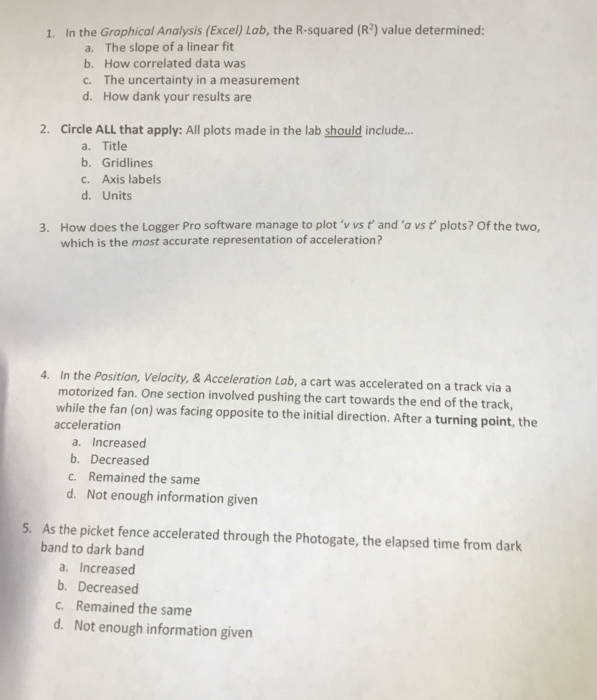How do you calculate R-squared in Excel?
※ Download: What is the r2 value in excel
The definition of R-squared is fairly straight-forward; it is the percentage of the response variable variation that is explained by a linear model. All contents Copyright 1998-2018 by MrExcel Publishing. Are High R-squared Values Inherently Good? For instance, low R-squared values are not always bad and high R-squared values are not always good!

Calculate P-Value Step Click a different cell that you want to use to calculate the p-value that is associated with your correlation. Substitute the addresses of your data ranges in place of these sample ranges.

How do you calculate R-squared in Excel? - However, similar biases can occur when your linear model is missing important predictors, polynomial terms, and interaction terms. This could happen if your R 2 is zero; After the adjustment, the value can dip below zero.
A straight line depicts a linear trend in the data i. There are no squared or cubed variables in this equation. A curved line represents a trend described by a higher order equation e. It is important that you are able to defend your use of either a straight or curved regression line. That is, the theory underlying your lab should indicate whether the relationship of the independent and dependent variables should be linear or non-linear. In addition to visually depicting the trend in the data with a regression line, you can also calculate the equation of the regression line. How well this equation describes the data the 'fit' , is expressed as a correlation coefficient, R 2 R-squared. The closer R 2 is to 1. This too can be calculated and displayed in the graph. The data below was first introduced in the and is from a chemistry lab investigating light absorption by solutions. Beer's Law states that there is a linear relationship between concentration of a colored compound in solution and the light absorption of the solution. This fact can be used to calculate the concentration of unknown solutions, given their absorption readings. This is done by fitting a linear regression line to the collected data. Creating an initial scatter plot Before you can create a regression line, a graph must be produced from the data. Traditionally, this would be a scatter plot. This module will start with the scatter plot created in the. A dialogue box appears Figure 2. Choose the Options tab and select Display equation on chart Figure 3 : Figure 3. Click OK to close the dialogue. The chart now displays the regression line Figure 4 Figure 4. Using the Regression Equation to Calculate Concentrations The linear equation shown on the chart represents the relationship between Concentration x and Absorbance y for the compound in solution. The regression line can be considered an acceptable estimation of the true relationship between concentration and absorbance. We have been given the absorbance readings for two solutions of unknown concentration. Using the linear equation labeled A in Figure 5 , a spreadsheet cell can have an equation associated with it to do the calculation for us. We have a value for y Absorbance and need to solve for x Concentration. The equation associated with the spreadsheet cell will look like what is labeled C in Figure 8. The solution for x Concentration is then displayed in cell 'C12'. Using the R-squared coefficient calculation to estimate fit Double-click on the trendline, choose the Options tab in the Format Trendlines dialogue box, and check the Display r-squared value on chart box. Your graph should now look like Figure 6. Note the value of R-squared on the graph. The closer to 1. That is, the closer the line passes through all of the points. Now lets look at another set of data done for this lab Figure 7. Notice that the equation for the regression line is different than is was in Figure 6. A different equation would calculate a different concentration for the two unknowns. Which regression line better represents the 'true' relationship between absorption and concentration? Look at how closely the regression line passes through the points in Figure 7. Does it seem to 'fit' as well as it does in Figure 6? No, and the R-squared value confirms this. Though we would need to take in to account information such as the number of data points collected to make an accurate statistical prediction as to how well the regression line represents the true relationship, we can generally say that Figure 6 represents a better representation of the relationship of absorption and concentration.
Positive Feline Correlation You can display the R-squared value on the trend line in your chart by selecting the Display R-squared value on chart check box in the Format Trendline dialog box. Theoretically, if a model could explain 100% of the variance, the fitted values would always equal the observed values and, therefore, all the data points would fall on the fitted regression line. Statisticians call this specification bias, and it is caused by an underspecified model. Hi, I have a bunch of charts with 6 months of data in each JAN - JUN. That is, the theory underlying your lab should indicate whether the relationship of what is the r2 value in excel independent and dependent variables should be linear or non-linear. Image: R 2 shows how well terms data points fit a curve or line. While R-squared provides an estimate of the strength of the relationship between your model and the response variable, it does not provide a formal hypothesis test for this relationship. Obviously, this type of information can be extremely valuable. R-squared does not indicate whether a regression model is adequate. This indicates a bad fit, and serves as a reminder as to why you should always check the residual plots.









/)





